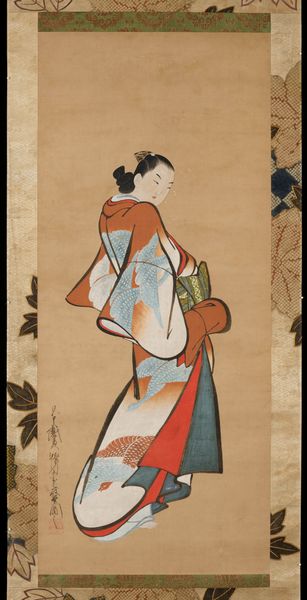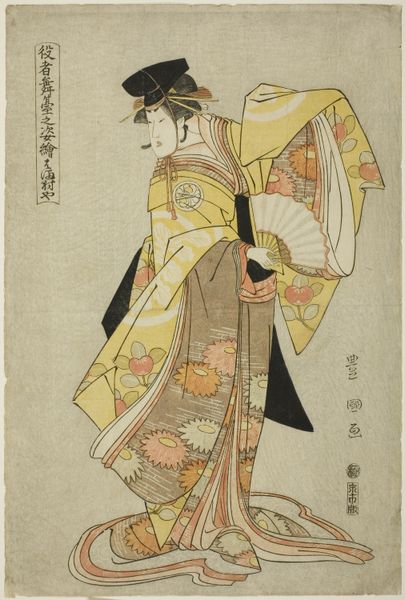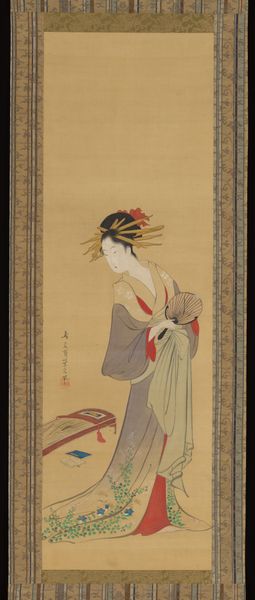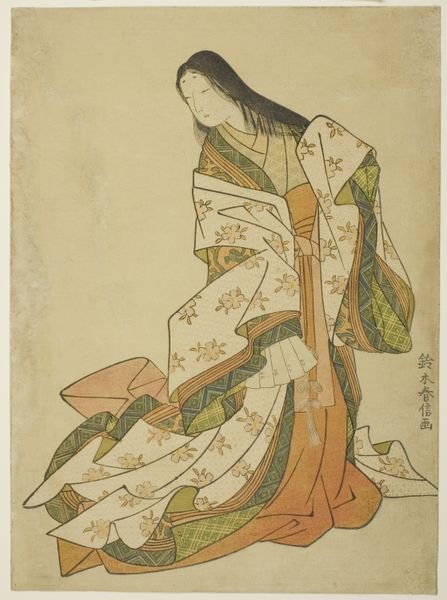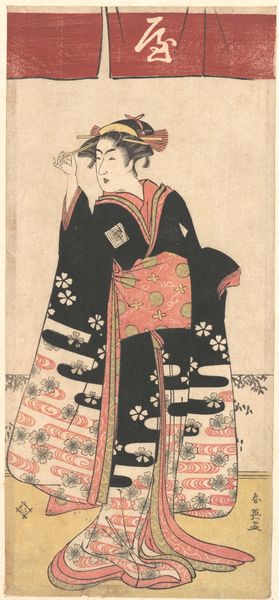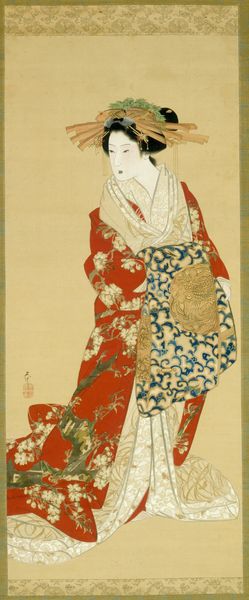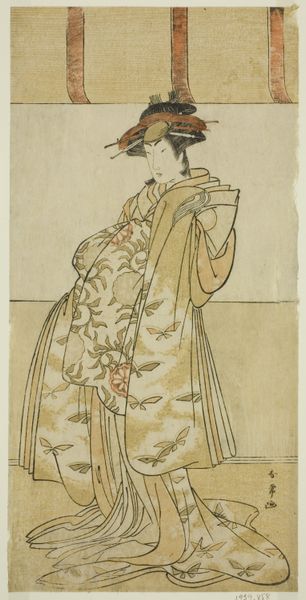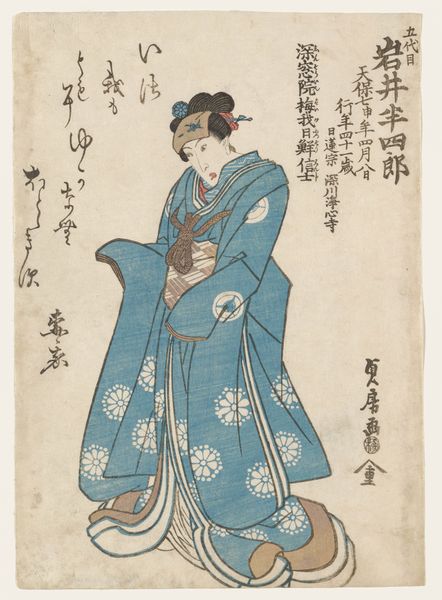
Standing prostitute wearing a kimono decorated with morning glories on a trellis c. 1720
0:00
0:00
painting, watercolor
#
portrait
#
painting
#
asian-art
#
ukiyo-e
#
japan
#
watercolor
#
watercolor
#
erotic-art
Dimensions: 35 13/16 x 14 9/16 in. (91 x 37 cm) (image)67 1/8 x 18 1/2 in. (170.5 x 47 cm) (mount) w 53.5 w/roller
Copyright: Public Domain
Curator: Isn't she stunning? The piece before us, dating back to around 1720, is entitled "Standing prostitute wearing a kimono decorated with morning glories on a trellis". It's an Asian watercolor piece held at the Minneapolis Institute of Art, crafted by the visionary Kaigetsudō Doshū. Editor: She absolutely radiates melancholy. I see the meticulous pattern of her kimono, those interwoven morning glories, yet a somberness pervades. What’s your take on the artistic structure here? Curator: I am completely absorbed by her dress—it's like an elaborate facade veiling raw emotion. See how Doshū uses these flat planes of color? No attempt is made to create realistic folds or depth, forcing the eye to trace the exquisite, repeating patterns instead. What emotional truths do you find embedded here, beneath the exquisite, outward display? Editor: I feel as though her head is almost hung in shame. Yet, it might as well just be modesty or some other ephemeral and bygone sentiment. To that extent, one is left to decipher not merely who she is, but also how those morning glories mirror her transient beauty, climbing and blooming, just like herself! Curator: Precisely! The Ukiyo-e tradition revels in portraying the fleeting pleasures of life, right? What appears, then, as mere surface decoration takes on poignant symbolism. The courtesan, the blossoms—all caught in a perpetual dance of bloom and decay. Do you think she really captures the transient, yet enduring, quality of female resilience within a strictly codified society? Editor: I appreciate your emphasis on the ephemeral, since it also gives form to more formal approaches. Think about how her posture is also bent like the curve of those flowering vines, with one of the hands held behind and hidden from sight—suggesting, on a compositional basis, all that is unsaid. It seems very artful for 1720. Curator: Indeed. Even today, generations removed from its origin, it beckons us to explore and engage. We cannot really comprehend this portrait of beauty unless we immerse ourselves, allowing it to awaken feelings long left unattended. Editor: The pleasure has been all mine. May this work invite listeners to see more clearly—to view, through its many interwoven layers, the simple lines of this complex masterpiece.
Comments
No comments
Be the first to comment and join the conversation on the ultimate creative platform.
